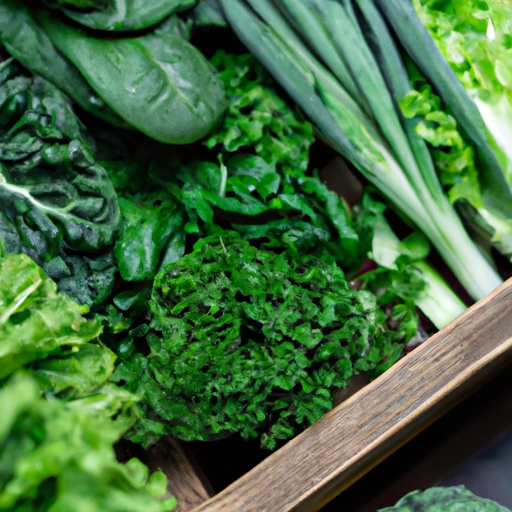Green
Description

The ingredient known as 'green' commonly refers to leafy green vegetables, which are essential components of a balanced diet. These vegetables are characterized by their vibrant green color, which is indicative of their rich nutrient content. Greens can include a variety of plants such as spinach, kale, collard greens, and romaine lettuce, among others. They are versatile in the kitchen and can be used in a multitude of recipes, catering to both Azjan and Western cooking styles. In American units, greens are often measured in cups (oz) or pounds (lb), while European recipes might use grams (g) or kilograms (kg).
Common uses
Greens are commonly used as salads, cooked vegetables, and as key ingredients in smoothies. They can also be found in sandwiches, soups, and as garnishes for a variety of dishes.
Nutritional value
Calories
Greens are low in calories, making them an ideal choice for weight management. For example, a cup of raw spinach contains approximately 7 calories.
Protein
While not high in protein, greens provide a modest amount, with kale providing about 2.9 grams per cup.
Fat
Greens are naturally low in fat, with most types containing less than 1 gram of fat per serving.
Carbohydrates
Carbohydrates in greens are primarily in the form of dietary fiber. A cup of cooked Swiss chard has about 7.2 grams of carbohydrates.
Vitamins
Greens are an excellent source of vitamins, particularly vitamin A, C, and K. For instance, a single cup of raw kale provides more than 100% of the recommended daily intake for vitamins A and K.
Minerals
They are also rich in minerals such as iron, calcium, and potassium. A serving of collard greens can supply a significant amount of calcium needed daily.
Health benefits
Eating greens can lead to improved digestion, a strengthened immune system, and may reduce the risk of chronic diseases thanks to their high antioxidant content.
Potential risks
Consumption of greens is generally safe for most people, though those taking blood thinners should monitor their vitamin K intake. Additionally, greens grown in contaminated soil can accumulate heavy metals and other harmful substances.
Common recipes
Greens are featured in a wide array of dishes, from classic salads and sides like sautéed spinach to cultural staples such as the Asian stir-fry or the Middle Eastern tabbouleh.
Cooking methods
They can be steamed, boiled, sautéed, or eaten raw. Certain hearty greens like kale are also suitable for baking or making chips.
Pairing with other ingredients
Greens pair well with a variety of ingredients including nuts, garlic, citrus fruits, and robust cheeses like feta or Parmesan.
Summary
Greens are a foundational ingredient across different cuisines worldwide. Not only do they enhance the flavor and visual appeal of dishes, but they also contribute significantly to a healthy diet. With their low caloric content and rich nutritional profile, greens offer a host of benefits and are adaptable to various cooking methods and recipes.